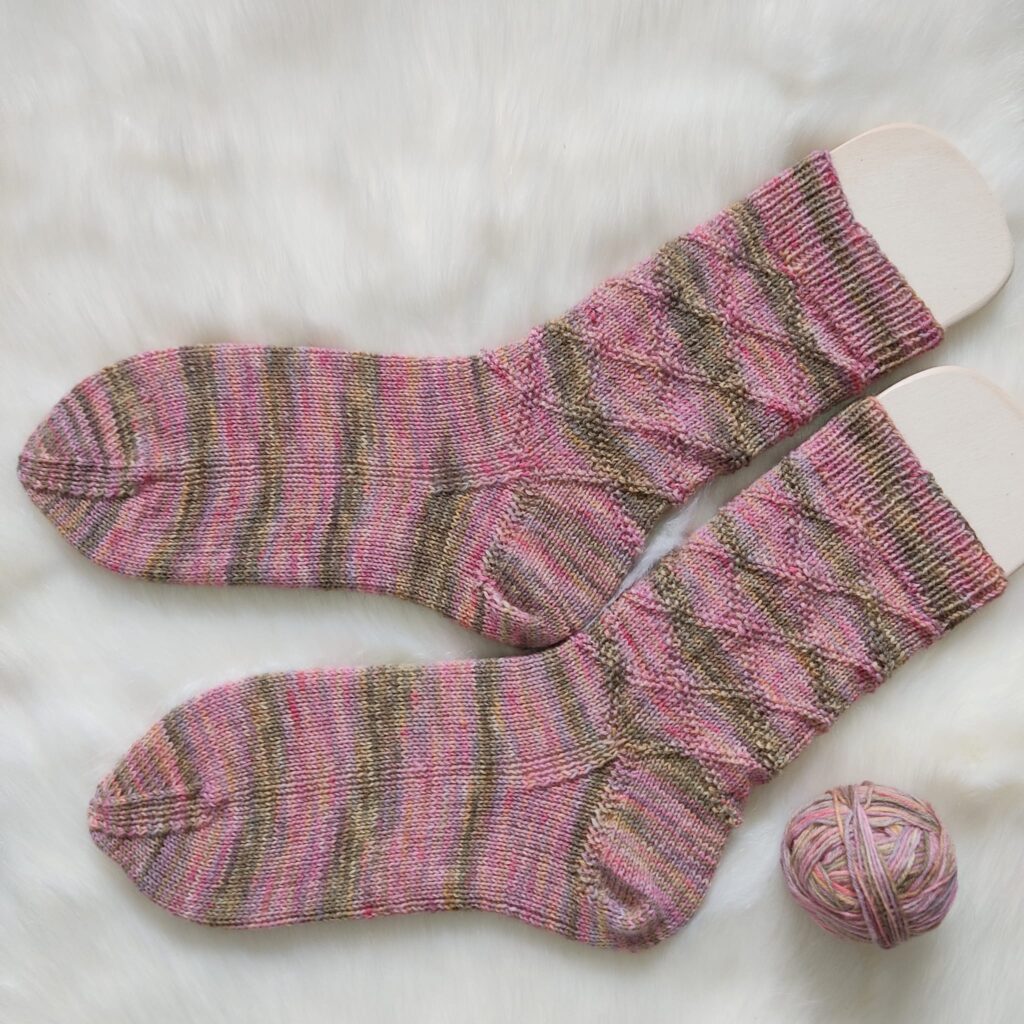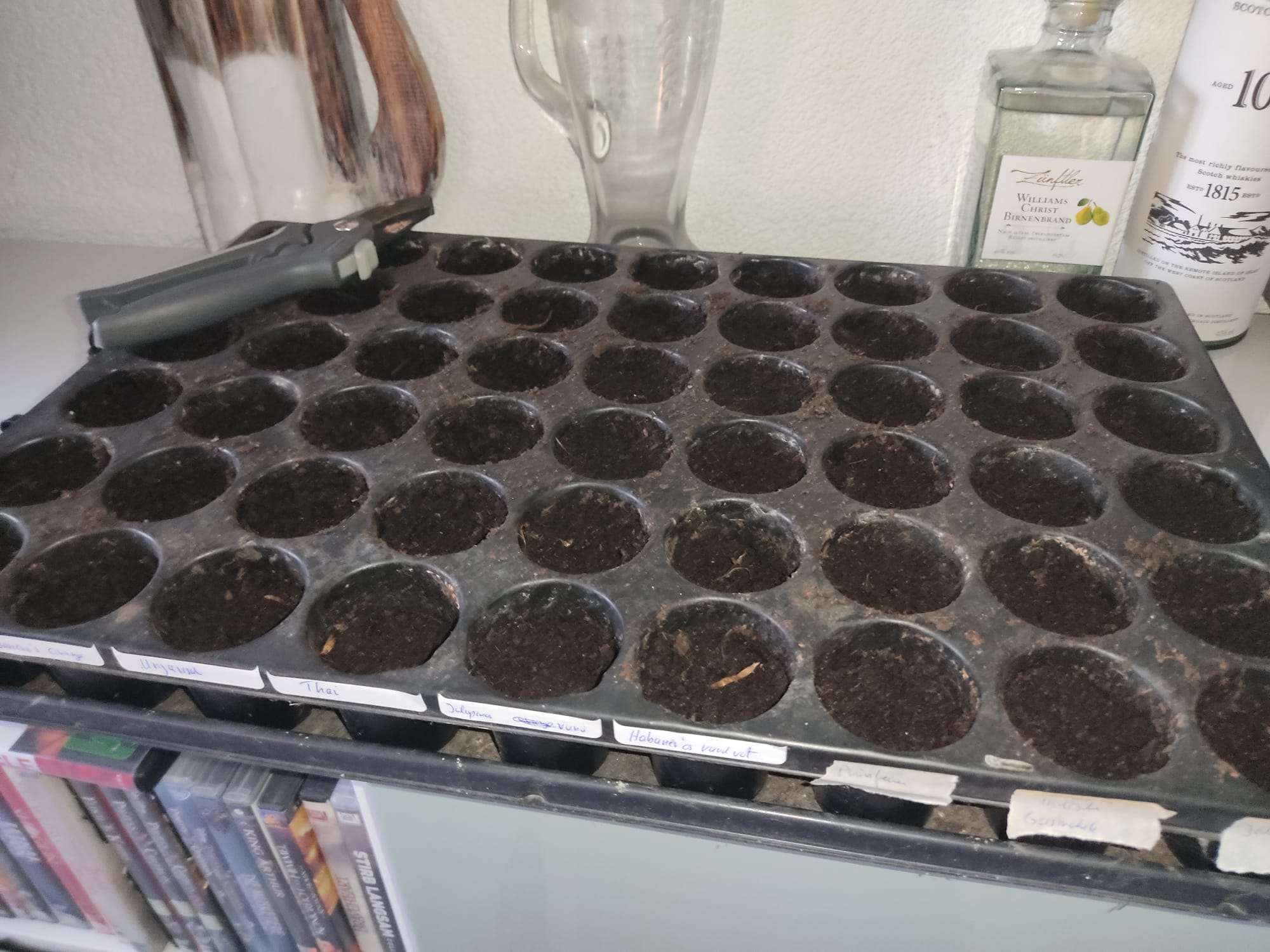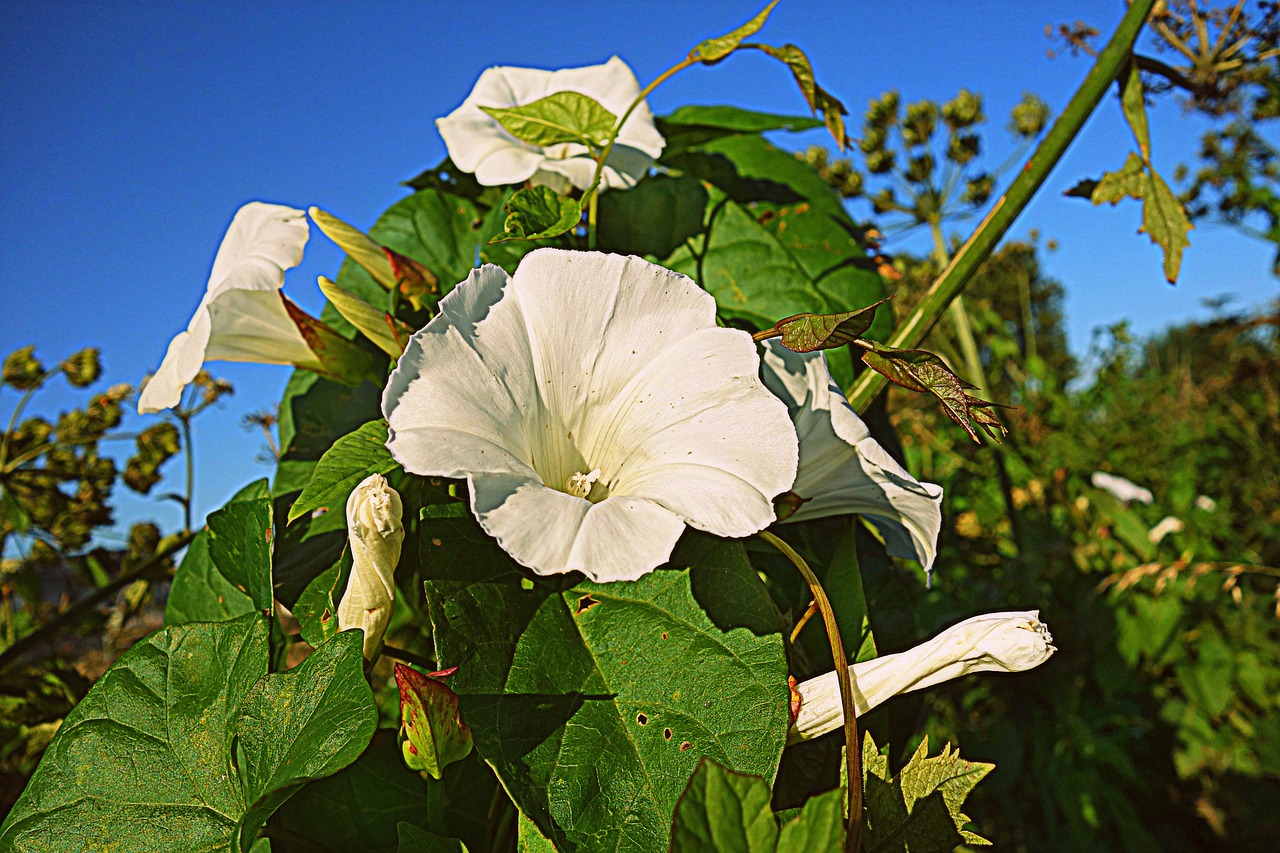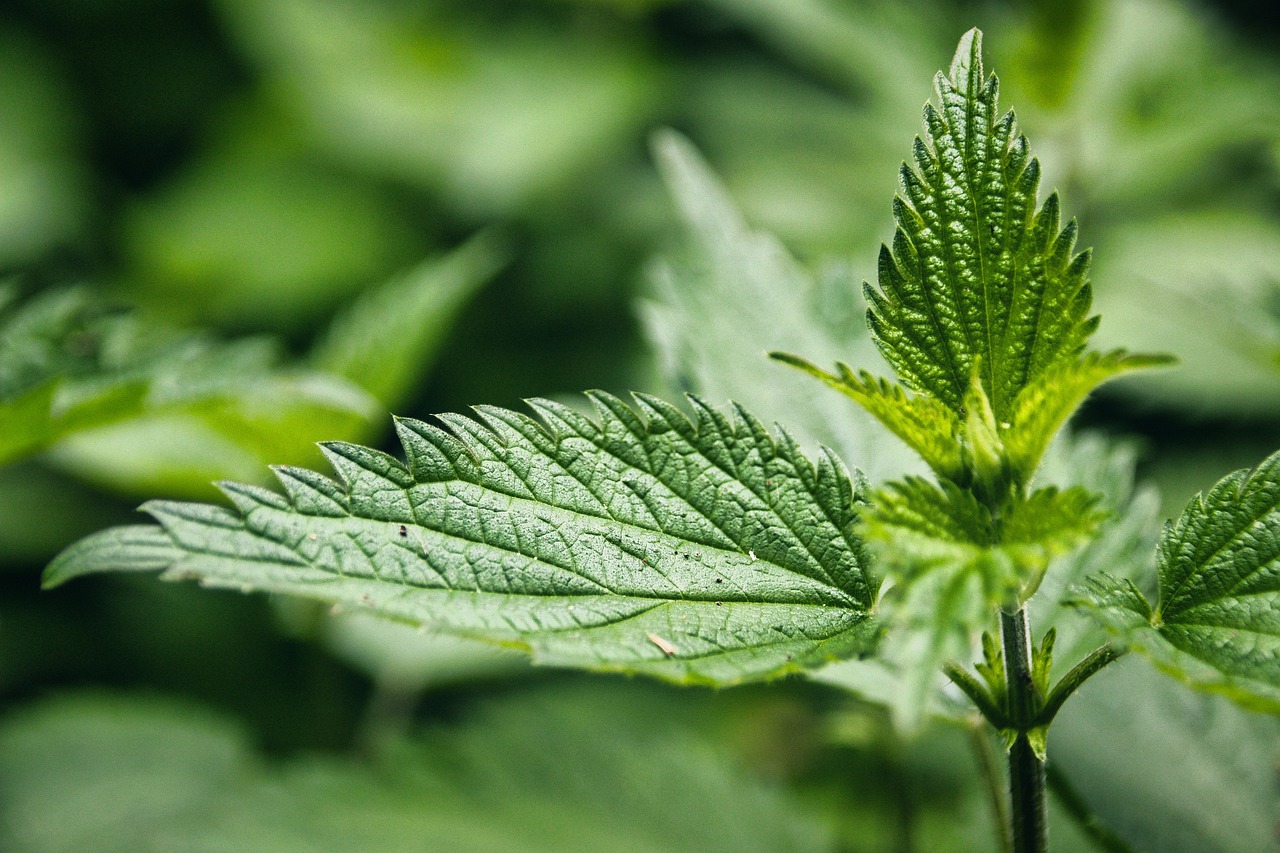
Finally, my socks from wool I bought Wool Festival in Leipzig 2024 are ready (I have quite some more sock wool from 2024). Here you can download the pattern.
The socks on Instagram: https://www.instagram.com/p/DIzMvUHo9rn/

Finally, my socks from wool I bought Wool Festival in Leipzig 2024 are ready (I have quite some more sock wool from 2024). Here you can download the pattern.
The socks on Instagram: https://www.instagram.com/p/DIzMvUHo9rn/

While my husband cares about the tomatoes and chillies, I care about the rest, 🙂 Our systems are a bit different: he writes the name of the variety on a piece of cardboard or on whatever is at disposal and I use and re-use plastic labels that have been around for years now. I add numbers to those sticks that must be unique, and then note the number and what is to grow on a piece of paper. Often this piece of paper vanishes, and therefore I am writing down the list here this year.
Many of these seeds are old. Let*s see, how many will grow.

… because the new gardening year is just around the corner. The garden is also slowly drying out, so I can get to the beds again without slipping too much. The coming days will be spent removing the ‘old’ from last year. Hopefully the insects and other small creatures won’t need as many hiding places. I have to start cleaning the beds and pruning back what needs to be pruned back. Below is an overview before the work begins.
Today, the chillies went into the pre-breeding tray. Nine varieties and six pots each. Friends and neighbours have already said they’ll take some, because we regularly have too many. My husband takes care of the chillies and tomatoes, while I take care of the rest.
Since I am often asked which plates I use: I used to have small plates, including plastic ones, but they broke after a short time. I have had the plate in the picture above for several years now, and it is lasting. So it is of good quality. I have ordered two more such plates and linked them below. There are a number of garden shops that sell them, but you can see reviews at this link.
I’m not quite sure yet where and how I’ll start outside. There will be updates here 🙂
Quickpot tray for 54 plants
Quickpot tray for 54 plants with lid

In politics, nothing happens by accident. If it happens, you can bet it was planned that way.
Image in the public domain. Source: Wikimedia Commons.

There are moments in life when you realise it’s over. A free project that is very dear to me is going to change shape, and that means it is time to leave it behind and move on. Am I sad? Well, not for the project, there are many new ones to come that need help. I am sad for the people, the sincere ones who have become dear to me. Those who always loved the time we spent together, talking, having a cup of coffee and so much more.
There are people in this world who always like to use your work and put themselves forward to show how great they are. One thing I know for sure: the universe will take care of it. In the end, they are the ones who are alone and live a lonely life. Should I feel sorry for such a person? To have things and to be in the light … well, if a person needs it, he or she can have it.
A heartfelt project cannot be replaced by a selfish one. A selfish person cannot replace a loving group of people. Such a person will destroy what has been built with love.
As the title says, it’s time to move on, to build new projects and not to look back. Let the past be the past, the present be the present, and the future be the future.
Thank you Universe for guiding my path to date and into the future. I would choose the same path again.
Original image by Jose Antonio Alba from Pixabay

Bindweed (Convolvulus spp.) can be used to create fiber, although it is not a common or traditional source of fiber compared to plants like flax, hemp, or cotton. Bindweed, particularly hedge bindweed (Calystegia sepium) and field bindweed (Convolvulus arvensis), have fibrous stems that can be processed to extract fiber. However, the quality and quantity of fiber obtained from bindweed are generally lower compared to more established fiber plants.
The process of extracting fiber from bindweed would involve harvesting the plants, retting (soaking to break down the softer tissues), and then separating the fibrous strands from the rest of the plant material. The fibers could then be spun into thread or cord, though they might be more suitable for rough, utilitarian purposes rather than fine textiles.
Historically, bindweed has not been widely used for fiber production due to its invasive nature and the availability of more efficient and productive fiber plants. However, in situations where other sources are unavailable, bindweed could be used as an emergency or supplementary fiber source.
While bindweed is not a commonly researched plant for fiber production, and there is limited scientific literature on this specific use, I can guide you toward related sources that discuss the fiber potential of various plants, including those in the same family as bindweed. The following references and sources might help you explore the concept of using unconventional plants like bindweed for fiber:
For precise references, you would need to access specific academic databases and libraries to find detailed studies or books that discuss the potential of bindweed as a fiber source in more detail. If you have access to a university library or online academic resources, those would be ideal places to search for these references.
Picture by 👀 Mabel Amber, who will one day on Pixabay
I played a bit with ChatGPT and I got interesting answers that are leading to further research. I imagined that bindweed is more than just a weed :-))) I hope you find this content a great place to start also your research about bindweed.

Stinging nettles (Urtica dioica) are often regarded with apprehension due to their painful sting, but they are a plant with a rich history and a multitude of beneficial properties. These perennials, commonly found in Europe, North America, and parts of Asia, have been utilized for centuries for their medicinal, culinary, and practical uses. In this blog post, we will explore the fascinating world of stinging nettles, highlighting their properties, benefits, and various applications.
Stinging nettles are easily recognizable by their serrated, heart-shaped leaves and tiny, inconspicuous green flowers. The leaves and stems are covered in tiny, hair-like structures called trichomes, which release a mix of chemicals, including histamine and formic acid, causing a stinging sensation upon contact with skin. Nettles thrive in moist, nutrient-rich soils and are commonly found in woodlands, along riverbanks, and in disturbed areas like roadsides and gardens.
Historically, stinging nettles have been used across various cultures for their medicinal properties. Ancient Egyptians used them to treat arthritis and lower back pain, while Roman soldiers rubbed nettles on their skin to help stay warm in cold climates. Traditional European medicine has long utilized nettles to treat ailments ranging from joint pain to seasonal allergies.
Stinging nettles are a powerhouse of nutrition, packed with vitamins, minerals, and antioxidants. Here are some key nutrients found in nettles:
The diverse array of nutrients in stinging nettles contributes to their numerous health benefits:
Despite their sting, nettles are a versatile and nutritious addition to the kitchen once they are properly prepared. Cooking or drying neutralizes the stinging chemicals, making them safe to eat. Here are some ways to enjoy nettles:
Beyond their medicinal and culinary uses, stinging nettles have several practical applications:
Stinging nettles are relatively easy to grow and can be cultivated in a home garden. They prefer moist, well-drained soil and partial shade. When harvesting nettles, it is crucial to wear gloves and long sleeves to avoid being stung. Young leaves are best for culinary use, while older leaves and stems are better suited for making teas and extracts.
Stinging nettles (Urtica dioica) are much more than a bothersome weed. They are a nutritional powerhouse, a versatile culinary ingredient, and a valuable medicinal plant. By understanding and appreciating the numerous benefits and uses of nettles, we can transform our perception of this misunderstood plant and harness its full potential for our health and well-being.
Disclaimer: This blog post is for informational purposes only and does not constitute medical advice. Always consult with a healthcare professional before using any herbal remedies or supplements.
Image by Alexander Fox | PlaNet Fox from Pixabay
Who notes the difference?

Instead of dwelling on your problems, start to focus on your dreams.
Instead of complaining about what’s wrong in your life, start to express gratitude for what’s right.
Instead of seeking validation and support from others, start to cultivate a deep sense of self love and self acceptance,
and most importantly, start to take action, start to do something every day that brings you closer to your dreams, your highest aspiration.
I don’t believe anyone in the history of colouring wool has ever had good and permanent results with beetroot, not only is it fugitive, it is also pH sensitive. (Paul Henry)
Usually, when knitting Socks, I keep things simple, because then I can, for example, listen to a podcast. In this case I had some single-coloured wool and knitting just along would have looked a bit too boring. Hence I wrote down my pattern (I am linking a short on how I do this). I am mostly too lazy to look around the net, since it really takes a lot of time only to end up using a very simple one or making my own. But yes, over time, I will also publish some more difficult ones. It’s just me loving simple stuff.
Sock knitting basics:
1) https://youtu.be/d5ysV8BwUyk?si=wC7FBHhgM-U6sqTi
2) https://youtu.be/3tPVUUiRQYE?si=Upaqosqmu3DkXiOa
3) https://youtu.be/2rrHj36An8w?si=JBgMPqNF12SKMepv
4) https://youtu.be/2rrHj36An8w?si=at1SWAK2r22RLAcn
Knitting basics:
1) https://youtu.be/Wd-0PZYPqyM?si=hR5s3cZQRPoB9Bcm
2) https://youtu.be/3ZcO3laLAUs?si=Wto20PCWtEcaqkQp
How to create your own pattern:
https://youtube.com/shorts/WKXanK-7dUQ?si=tVZa2HRAi1IqMLQV
Materials used:
Wool: 6-ply yarn for example:
https://amzn.to/4bwwmuJ or
https://amzn.to/4dWgFPa
Needles (I love wooden needles):
https://amzn.to/3KgUq92 or
https://amzn.to/3wNBQlT